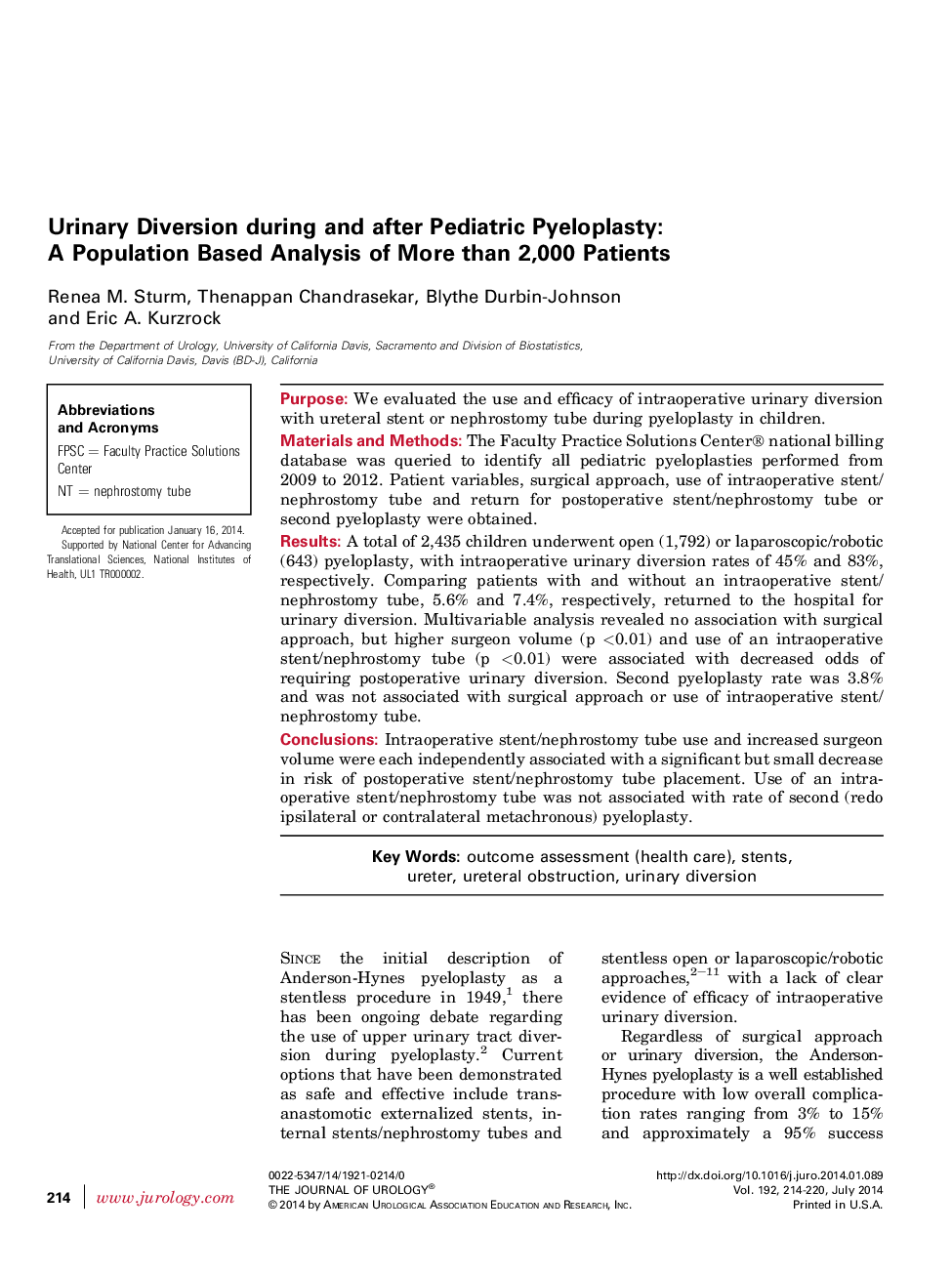| Article ID | Journal | Published Year | Pages | File Type |
|---|---|---|---|---|
| 3862108 | The Journal of Urology | 2014 | 7 Pages |
PurposeWe evaluated the use and efficacy of intraoperative urinary diversion with ureteral stent or nephrostomy tube during pyeloplasty in children.Materials and MethodsThe Faculty Practice Solutions Center® national billing database was queried to identify all pediatric pyeloplasties performed from 2009 to 2012. Patient variables, surgical approach, use of intraoperative stent/nephrostomy tube and return for postoperative stent/nephrostomy tube or second pyeloplasty were obtained.ResultsA total of 2,435 children underwent open (1,792) or laparoscopic/robotic (643) pyeloplasty, with intraoperative urinary diversion rates of 45% and 83%, respectively. Comparing patients with and without an intraoperative stent/nephrostomy tube, 5.6% and 7.4%, respectively, returned to the hospital for urinary diversion. Multivariable analysis revealed no association with surgical approach, but higher surgeon volume (p <0.01) and use of an intraoperative stent/nephrostomy tube (p <0.01) were associated with decreased odds of requiring postoperative urinary diversion. Second pyeloplasty rate was 3.8% and was not associated with surgical approach or use of intraoperative stent/nephrostomy tube.ConclusionsIntraoperative stent/nephrostomy tube use and increased surgeon volume were each independently associated with a significant but small decrease in risk of postoperative stent/nephrostomy tube placement. Use of an intraoperative stent/nephrostomy tube was not associated with rate of second (redo ipsilateral or contralateral metachronous) pyeloplasty.
